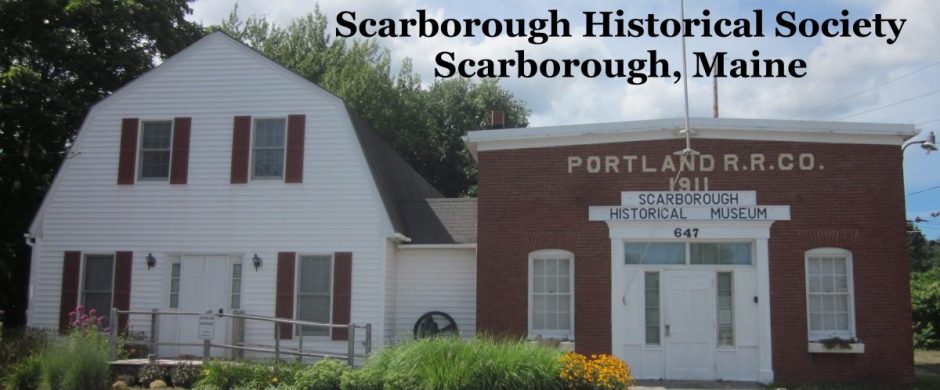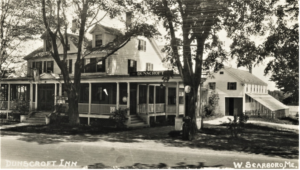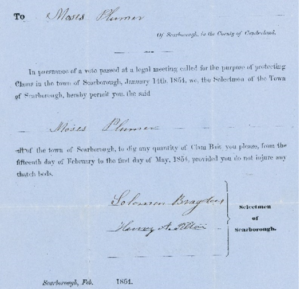By Linda McLoon with assistance from Rodney Laughton
The Clams of Scarborough
“You may sing of your Providence oysters,
Or boast of your roasted spring lamb,
But there’s no dish or compound that ever was cooked,
That comes up to the Scarboro clam.”
Scarborough clams have been sought-after seafood for as long as we can remember, whether served as fried clams, steamers, clam cakes, or clam chowder. Early 20th-century restaurants such as the Moulton House, Dunscroft, and Tarry-A-While were famous for their shore dinners, which in addition to a broiled lobster, always included both fried clams and steamers. Massive shell middens left behind by Native Americans indicate that clams were a staple of their summertime diets.
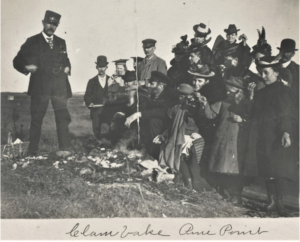 Clam Bake – Pine Point – (SHS Collections) |
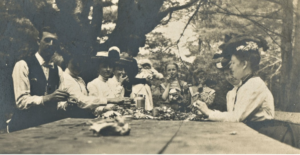 Enjoying Clams (SHS Collections) |
There was a time in the 19th century when the plentiful clams dug on Scarborough clam flats were not thought of as anything special. Prior to the 1870s, when tourists discovered the tasty mollusks, clams were considered poor man’s food. In addition to being used for consumption, clams had another use. Clams were used for bait. Clams were so abundant in 1854 when Moses Plummer requested a license to dig them, they were often used for bait in long-line fishing. A hook with clam bait was placed every few feet on a long line that was let out behind a fishing boat. Later the line would be hauled in along with a good catch of fish attached to it.
